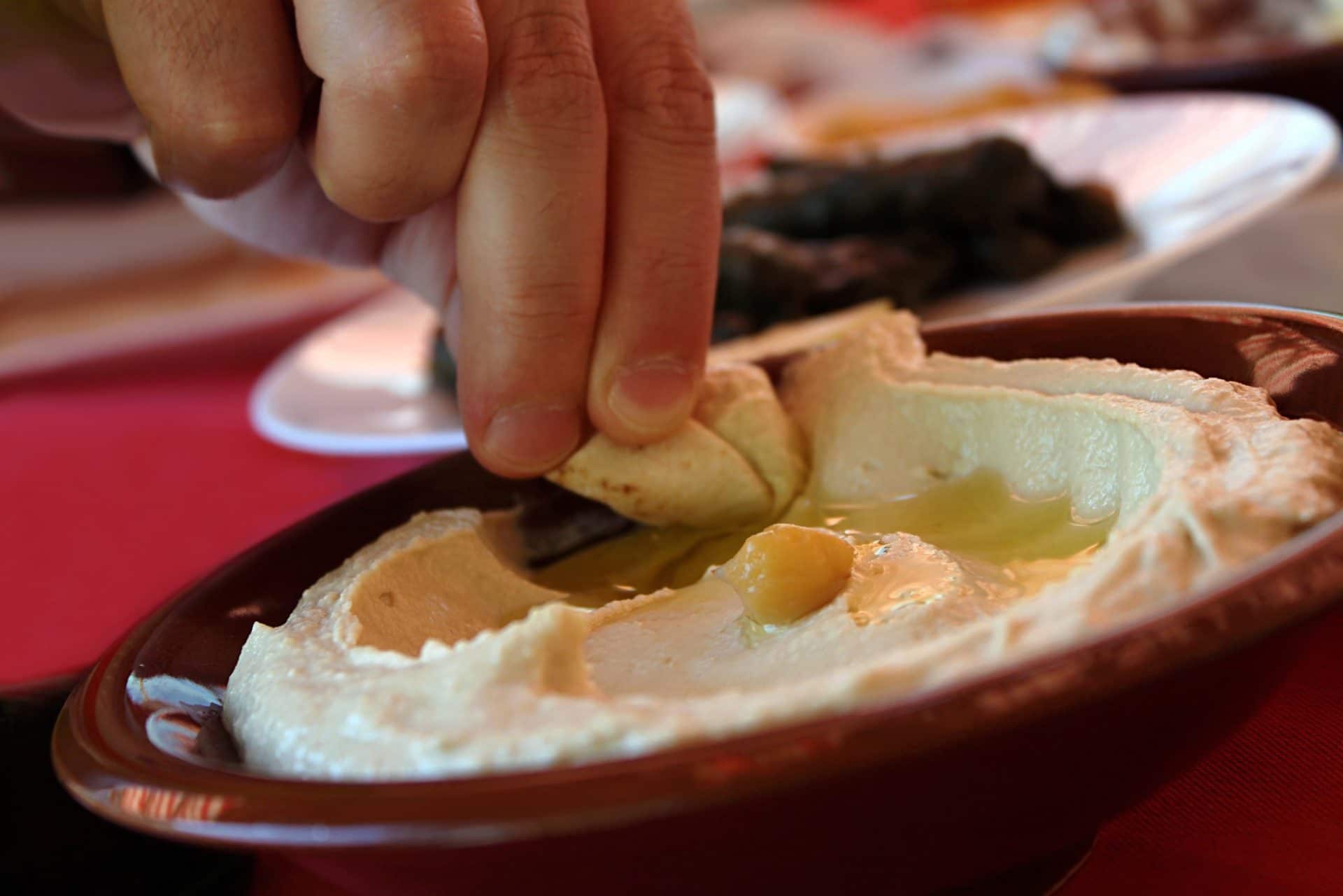My first cultural encounter with hand-to-mouth dining took place in a Berber home, deep in the High Atlas Mountains. Picking olives from a bowl was easy enough, but when it came to digging into the tagine, Morocco’s national dish, my whole body started to sweat. Somehow I had to tear through big chunks of meat and vegetables with a small piece of flat bread, using only my right hand. The next challenge was to scoop up the food with my thumb and first two fingers and ferry it to my mouth without making a mess in the process.
Who would have thought that eating with the hands could be so hard?

Moroccan tagine with sesame bread. Photo courtesy of Elzbieta Sekowska via Shutterstock
Hand-to-mouth eating is a time-honored tradition in many cultures across the world, and it’s often a reflection of a community’s hospitality and cultural identity. In the Middle East and North Africa, people eat from communal dishes, while in India it is customary to share food from each other’s plate.
Dining etiquette still comes into play when eating with your hands, and knowing the rules of this custom will spare you some embarrassing moments with your hosts. Here are some table manners for dining in hand-to-mouth cultures, plus the surprising health benefits of tucking into food with your hands.

Ethiopian injera. Photo courtesy of rweisswald via Shutterstock
Why Some Cultures Eat with the Hands
According to an Indian saying, eating food with your hands does not only feed the body, but it also feeds the mind and spirit. In Hindu Vedic belief, each finger represents the five elements — space, air, fire, water and earth — and therefore the hands are considered a powerful organ. For this reason, many Indians believe eating with the fingers creates a sensuous connection with the food, enhancing our awareness of “taste” and improving digestion.
Hand-to-mouth eating is also an important tradition in Muslim countries, where families and friends gather around tables laden with communal dishes. Many Muslims follow eating habits that were practiced and preached by the Prophet Mohammed, which include eating with the right hand and sharing food with others. In Muslim cultures, food is meant to be eaten slowly and moderately, and this can be kept in check by using the hands.
For practical reasons, many Africans still prepare and consume food manually. While in India and the Middle East naan or pita bread is used to spoon up food, the Ethiopians and Eritreans have injera; a spongy, yeast-risen flatbread similar to a pancake. In Western and Central Africa, a dough ball, fufu, serves as a spoon when eating soups and stews.

Dipping pita bread in hummus. Photo courtesy of Eliane Haykal via Shutterstock
The Etiquette of Hand-to-Mouth Dining
It might seem like you can’t get it wrong, but there are rules to follow when eating with your hands in some countries. For starters, you should always eat with your right hand, as the left one is deemed unclean in Arab, Indian and African cultures. Your hosts might pass around a jug with water and a bowl to wash your hands in; a custom which is mainly common in African countries.
When eating with your hands in India, always use your fingertips, making sure the food doesn’t touch your palms. It is also important not to put your fingers in your mouth, but just push the food in with your thumb. If you’re sharing a dish with other diners, eat only from your side of the plate and wait until the end of the meal to lick your fingers.
In cultures where naan or pita bread is a substitute for cutlery, use your thumb and first two fingers to scoop food. When dining in North Africa or the Middle East, it is normally the house owner who breaks the bread and distributes it to guests. Helping yourself to bread straightaway might upset your host.
Mastering hand-to-mouth etiquette might take a while, but your hosts will appreciate your effort — and probably spoil you with more food!

Photo courtesy of zeljkodan via Shutterstock
The Health Benefits of Eating with our Hands
If you thought eating with your hands was unhygienic, think again! When we pick food with our hands, our fingers produce enzymes and digestive juices needed to break down food in our stomach. The bacteria, or flora, found on our fingers and palms also aid digestion.
The moment we touch food with our hands, our nerve endings send signals to our brain, which prepares the stomach for the digestion process. And of course, you’re less likely to burn your mouth this way.
Eating with our fingers helps keep us in good shape as we become more mindful of what we eat and how much we eat. This physical contact with food not only prevents overeating, but it also heightens our sense of taste.
So, are you ready to put your cutlery away and dig in with your hands?
CONTRIBUTED by Daniela Frendo

Jessica Festa is the editor of the travel sites Jessie on a Journey (http://jessieonajourney.com) and Epicure & Culture (http://epicureandculture.com). Along with blogging at We Blog The World, her byline has appeared in publications like Huffington Post, Gadling, Fodor’s, Travel + Escape, Matador, Viator, The Culture-Ist and many others. After getting her BA/MA in Communication from the State University of New York at Albany, she realized she wasn’t really to stop backpacking and made travel her full time job. Some of her most memorable experiences include studying abroad in Sydney, teaching English in Thailand, doing orphanage work in Ghana, hiking her way through South America and traveling solo through Europe. She has a passion for backpacking, adventure, hiking, wine and getting off the beaten path.








